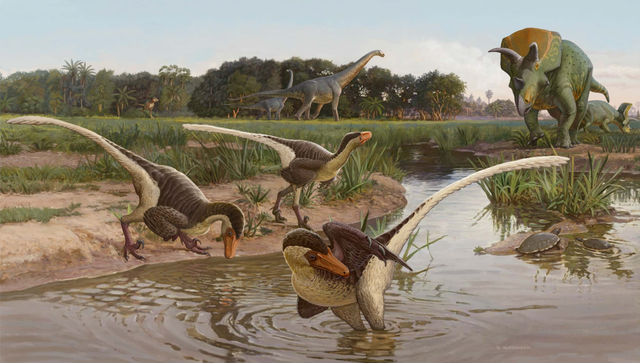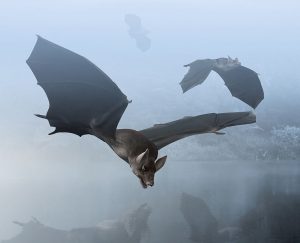
By Jim Brace-Thompson
How we render ancient critters is not an exact science based on bones and anatomy. It also depends a lot on speculation and preconceptions. When we thought of dinosaurs as “overblown lizards,” we drew and painted them in sluggish poses with legs splayed out to the side and tails dragging on the ground. Most often, the truly big dinos were thought to be too big for their britches and thus depicted in swamps where water could support their overblown bellies. Surely, we thought, such big critters would need the help of water to support their vast weight.
That was then. This is now!
Emergence of PaleoArt
Back in the late 1970s through the early 1990s, a “dinosaur renaissance” began, and paleontologists such as Bob Bakker began reimagining dinosaurs not as sluggish would-be lizards but as dynamic and active critters amped with as much energy and chutzpah as a modern-day rhino. Thus, dinosaur artists began depicting their subjects with heads held high, legs tall and galloping, and tails erect and switching.
Per an article by Ilja Nieuwland in the July 10, 2020 issue of the journal Science, paleoart has now “come into its own.” Artists, teaming with scientists, have begun a whole new approach to render long-extinct critters never seen in the flesh by human eyes.

Obsidian Soul, Wikimedia Commons
Nieuwland quotes Esther van Gelder as saying, “the generation that got interested in paleontology through dramatic new images of dinosaurs in the eighties and early nineties is now starting to write books, make art, and curate exhibits themselves.” This generation has embraced a book by authors J. Conway, C.M. Kosemaen, and D. Nash called All Yesterdays: Unique and Speculative Views of Dinosaurs and Other Prehistoric Animals, 2012. That book has been described as a “game-changer.” The authors encourage paleoartists to embrace the “known unknowns” and to be more daring in how they depict extinct critters, using not only what we know from the bones but what we might imagine based on contemporary critters scampering about our Earth.
It is hoped that a newfound dynamism in paleoart can help inspire still future generations in reimagining past life in all its glorious possibilities and probabilities rather than “recycling” older, dated images. We live, after all, on an Earth blessed with life in all manner wondrous to behold.












